Travel blogging has emerged as a dynamic and accessible avenue for individuals to chronicle their adventures, forge connections with like-minded travelers, and even transform their passion for exploration into a viable source of income. This phenomenon has been propelled by the rapid growth of digital platforms, the democratization of information through the internet, and the increasing desire of people to document and share their travel experiences.

At its core, travel blogging is the art of narrating personal journeys and explorations through a digital medium, typically a blog or social media platform. This form of self-expression enables individuals to showcase not only the destinations they visit but also the unique stories, insights, and perspectives that arise from their experiences. The democratization of travel information on the internet has empowered anyone with an internet connection to become a storyteller, sharing their adventures with a global audience.
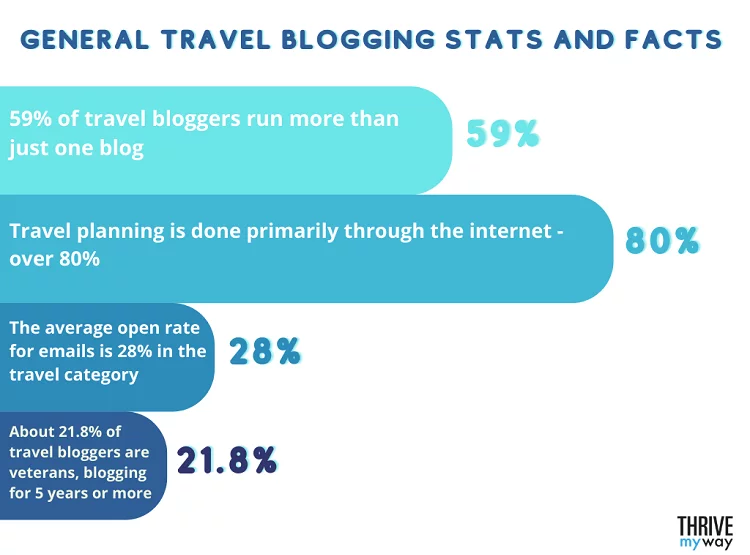
Steps to Create a Travel Blog:
1. Define Your Niche

Selecting a niche is a crucial first step in establishing your identity as a travel blogger. While the vastness of the travel landscape may tempt you to cover everything, honing in on a specific niche not only helps you stand out but also attracts a more targeted and engaged audience. Let’s delve into some popular travel niches and illustrate this step with a real-life example.
Example: Nomadic Matt – Budget Travel
Nomadic Matt’s Travel Blog: Nomadic Matt

Niche: Budget Travel
Why It Works:
- Alignment with Personal Interests: Nomadic Matt, also known as Matt Kepnes, is a prominent figure in the travel blogging sphere, focusing primarily on budget travel. He developed a keen interest in exploring the world while on a trip to Thailand, and this passion for travel on a budget became the cornerstone of his blog. His personal experiences and anecdotes resonate with readers who share a similar desire for economical travel options.
- Expertise in the Niche: Over the years, Nomadic Matt has honed his expertise in budget travel, providing detailed guides, tips, and resources for individuals seeking affordable adventures. His in-depth knowledge, coupled with practical advice, establishes him as a go-to source for budget-conscious travelers.
- Building a Targeted Audience: By concentrating on budget travel, Nomadic Matt has cultivated a specific audience demographic—travelers who are looking for money-saving tips, budget-friendly destinations, and efficient ways to explore the world without breaking the bank. This targeted approach has allowed him to build a community that actively engages with his content.
- Monetization Opportunities: Nomadic Matt has successfully turned his passion into a sustainable income stream. Through his blog, he offers e-books, courses, and affiliate partnerships with budget-friendly travel services. His focused niche has attracted partnerships with companies catering to budget-conscious travelers, allowing him to monetize his platform effectively.
Key Takeaways for Choosing Your Niche:
- Alignment with Personal Interests: Choose a niche that aligns with your passion and personal experiences, as this authenticity will resonate with your audience.
- Expertise and Authority: Select a niche where you can establish yourself as an expert. This might be based on your personal experiences, professional background, or dedicated research.
- Targeted Audience: Define your target audience clearly. A specific niche will attract a more focused and engaged audience, leading to better interaction and community building.
- Monetization Potential: Consider the potential for monetization within your chosen niche. This could involve affiliate marketing, sponsored content, or creating and selling products/services related to your niche.
2. Choose a Blog Name and Domain

Now that you’ve defined your niche, the next crucial step is selecting a blog name and securing a corresponding domain. Your blog’s identity is essential for brand recognition and attracting your target audience. Let’s explore this step with another real-life example:
Example: The Blonde Abroad – Solo Female Travel
Blog Name: The Blonde Abroad
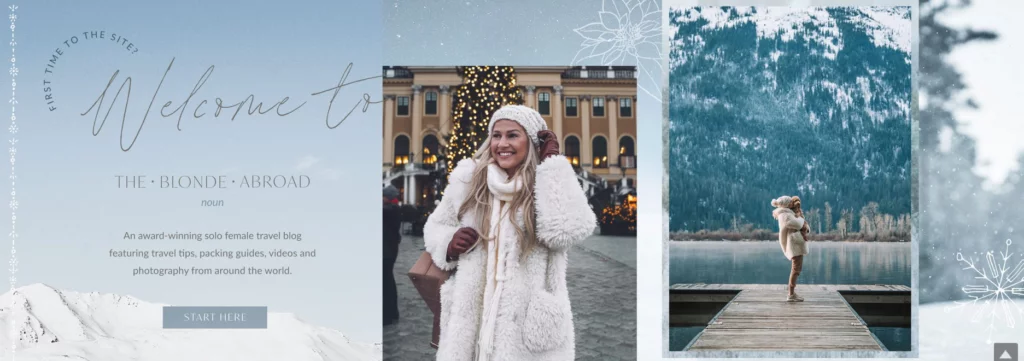
Domain: TheBlondeAbroad.com
Why It Works:
- Relevance to Niche: “The Blonde Abroad” immediately communicates the niche of solo female travel. The term “abroad” suggests a sense of adventure and exploration, while “blonde” adds a personal touch, highlighting the solo female perspective.
- Memorability and Catchiness: The blog name is catchy and memorable, making it easy for readers to recall and share. It combines elements that evoke a sense of wanderlust and personal identity, contributing to its appeal.
- Domain Availability: By securing the domain TheBlondeAbroad.com, the blogger ensures a consistent and professional online presence. Checking domain availability early in the process is crucial to avoid potential conflicts and establish a unique digital identity.
- Cohesive Branding: The Blonde Abroad maintains a cohesive brand across various platforms, including social media. This consistency strengthens brand recognition and makes it easier for followers to find and engage with the content.
Key Takeaways for Choosing a Blog Name and Domain:
- Clear Niche Representation: Your blog name should clearly represent your niche. In the case of The Blonde Abroad, the name immediately conveys the focus on solo female travel.
- Personal Touch and Identity: Adding a personal touch to your blog name, such as highlighting personal characteristics or experiences, can make it more relatable and engaging for your target audience.
- Domain Availability: Ensure the availability of your chosen blog name as a domain. Consistency between your blog name and domain strengthens your brand identity and aids in online visibility.
- Branding Across Platforms: Maintain consistency in your branding across various platforms. This includes social media handles, ensuring a seamless and recognizable experience for your audience.
3. Set Up Hosting and WordPress

Now that you’ve defined your niche and chosen a blog name, the next crucial step is setting up hosting and installing a content management system (CMS) like WordPress. This is essential for making your blog accessible on the internet and for designing and managing your content. Let’s explore this step with an example:
Example: Legal Nomads – Food and Culinary Experiences

CMS: WordPress
Why It Works:
- Reliable Hosting Provider: Legal Nomads, a blog focusing on food and culinary experiences, uses Bluehost as its hosting provider. Bluehost is known for its reliability, excellent customer service, and user-friendly interface, making it a suitable choice for bloggers, especially those starting out.
- One-Click WordPress Installation: Bluehost offers one-click installations for WordPress. This simplifies the process of setting up your blog, especially if you’re not tech-savvy. Legal Nomads benefits from the seamless integration of WordPress, a versatile CMS that facilitates content creation and management.
- User-Friendly Interface: WordPress is renowned for its user-friendly interface, making it accessible for bloggers with varying levels of technical expertise. Legal Nomads can easily design and update their blog without extensive coding knowledge, allowing more focus on content creation.
- Scalability and Customization: As Legal Nomads has grown, WordPress has allowed for scalability and customization. The platform supports various plugins and themes, enabling bloggers to enhance functionality and tailor the look and feel of their blogs according to their brand.
Key Takeaways for Setting Up Hosting and WordPress:
- Choose a Reliable Hosting Provider: Select a hosting provider known for reliability and good customer service. Bluehost, SiteGround, and HostGator are popular choices for bloggers due to their user-friendly interfaces and reliable services.
- Utilize One-Click WordPress Installation: Take advantage of hosting providers that offer one-click installations for WordPress. This streamlines the setup process, especially for beginners, and ensures a quick start to your blogging journey.
- Embrace the Power of WordPress: WordPress is a versatile CMS that caters to bloggers of all levels. Its user-friendly interface, extensive plugin library, and customizable themes make it a powerful tool for designing, managing, and scaling your blog.
- Consider Scalability: As your blog grows, scalability becomes crucial. WordPress provides the flexibility to scale your blog and customize its features, ensuring it can evolve with your expanding audience and changing needs.
Step 4: Customize Your Blog

Once WordPress is installed, the next crucial step is to customize your blog, giving it a unique and visually appealing identity. Select a theme that complements your niche, considering both free and premium options available in the WordPress theme repository or on platforms like ThemeForest. Personalize the colors, fonts, and layout to create a distinctive look for your blog.
Example: Wandering Earl – Cultural Exploration
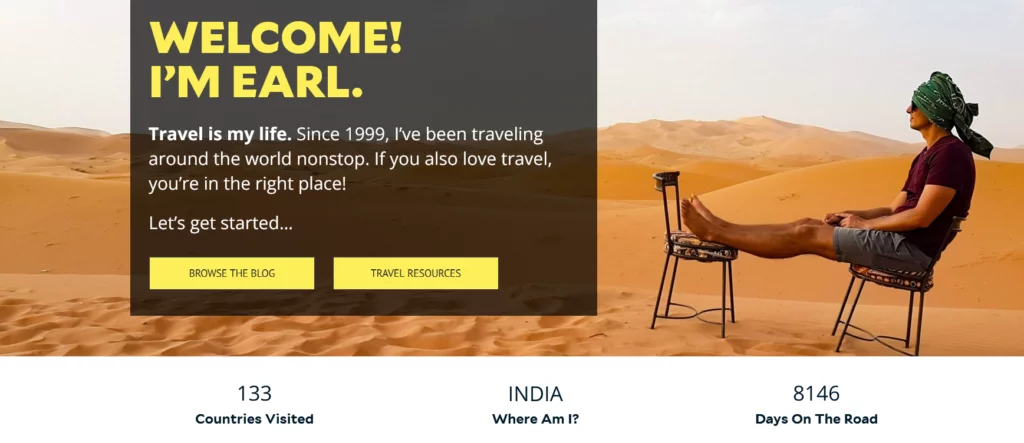
Why it works:
- Theme Selection: Wandering Earl, a blog focused on cultural exploration, employs a theme that reflects a minimalist yet immersive design. The chosen theme emphasizes readability and showcases images to convey the essence of cultural experiences.
- Visual Elements: Visual elements, such as a carefully curated selection of images, play a crucial role in customizing the blog. Wandering Earl’s theme prioritizes a clean and uncluttered layout, allowing readers to immerse themselves in the cultural stories shared.
- Branding Consistency: Customization choices ensure consistency with Wandering Earl’s brand. The minimalist design aligns with the blog’s focus on cultural exploration, contributing to a cohesive and recognizable brand identity.
- User-Friendly Navigation: The blog layout is designed for user-friendly navigation, allowing readers to easily explore content related to cultural immersion. The focus on simplicity ensures a seamless user experience.
Key Takeaways for Customizing Your Blog:
- Visual Alignment with Niche:
- Choose a theme that visually aligns with the tone and subject matter of your niche. Wandering Earl’s customization choices create an immersive experience that resonates with readers interested in cultural exploration.
- Consistent Branding:
- Maintain consistency in branding throughout customization. A cohesive design reinforces your blog’s identity and facilitates easy recognition by your audience.
- User-Friendly Navigation:
- Prioritize user-friendly navigation in your blog layout. Wandering Earl’s design ensures that readers can explore cultural content effortlessly.
5. Create High-Quality Content
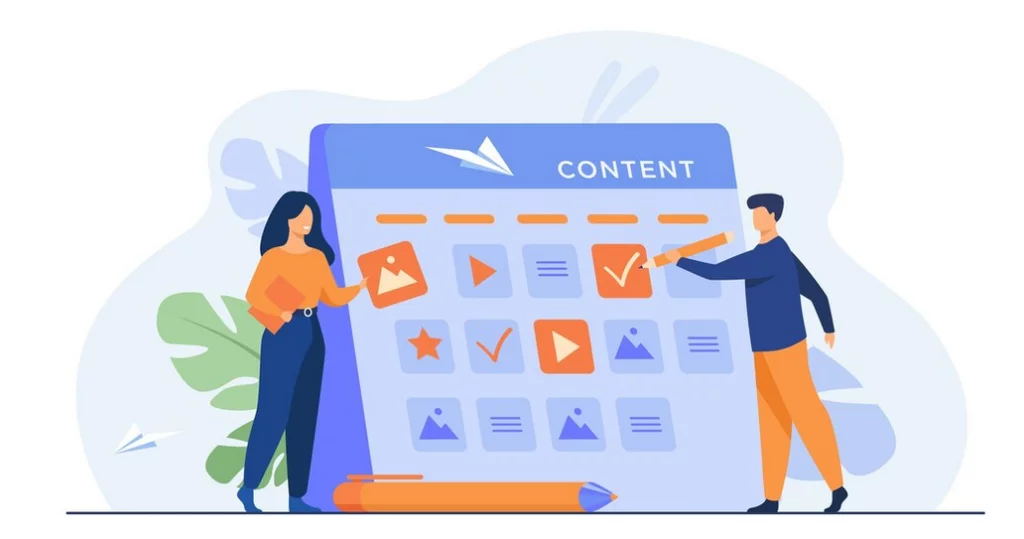
With your blog customized, it’s time to fill it with compelling content. In the world of blogging, content is king. Share your travel experiences, insights, and tips through informative and engaging blog posts. Utilize high-quality images and videos to captivate your readers. Regularly update your blog with fresh and valuable content to keep your audience engaged.
Example: The Points Guy – Luxury Travel
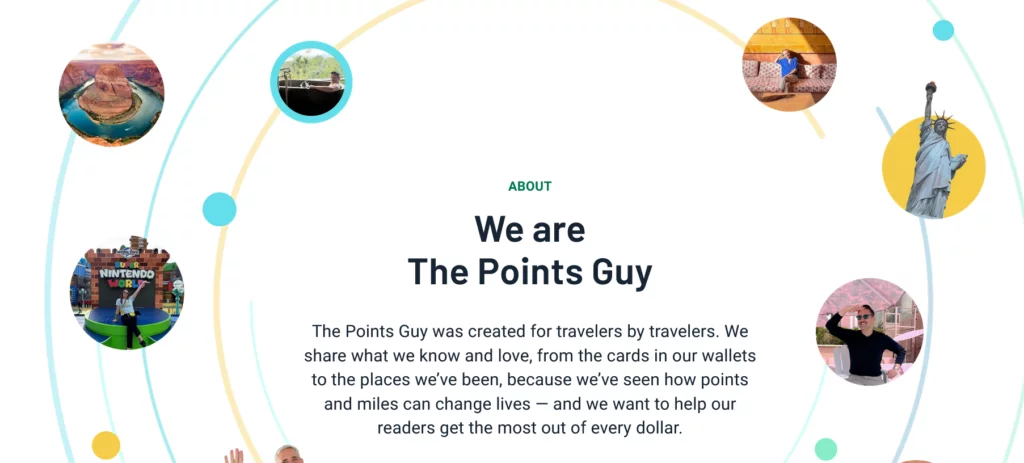
Why it works:
- Informative and Engaging: Craft content that is both informative and engaging. The Points Guy’s focus on luxury travel involves providing detailed insights and expert advice to enhance the reader’s understanding of premium travel options.
- Visual Appeal: Incorporate high-quality images and videos to enhance the visual appeal of your content. The Points Guy utilizes multimedia to convey the opulence and exclusivity associated with luxury travel.
- Expert Insights: Leverage expert insights to establish authority in your niche. The Points Guy’s expert reviews and insider tips contribute to the blog’s reputation as a go-to source for luxury travel information.
6. Optimize for SEO

In the vast online landscape, visibility is key, and search engine optimization (SEO) plays a crucial role in increasing your blog’s visibility. Incorporate relevant keywords into your content, write compelling meta descriptions, and optimize your images for search engines. Installing an SEO plugin like Yoast SEO can assist with on-page optimization, ensuring your blog ranks higher in search engine results.
Example: Hiking Lady – Adventure Travel
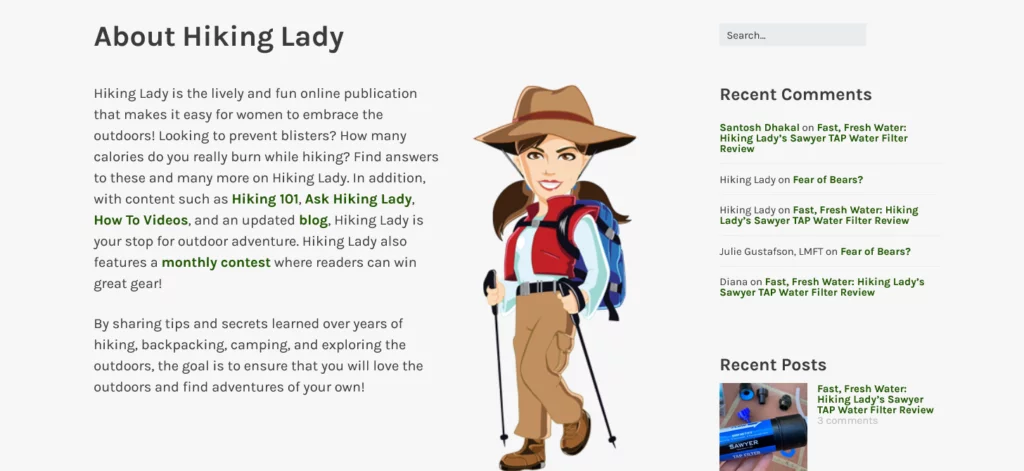
Why it works:
- Keyword Optimization: Hiking Lady strategically incorporates relevant keywords related to adventure travel and hiking. This optimization increases the likelihood of the blog appearing in search results when users seek information on these topics.
- Compelling Meta Descriptions: Thoughtfully crafted meta descriptions provide concise yet enticing summaries of Hiking Lady’s content. These descriptions encourage users to click through to the blog from search results.
- Image Optimization: Hiking Lady optimizes images with descriptive filenames and alt text. This practice improves visibility in image search results, making the blog discoverable not only through text but also through visuals.
- Yoast SEO Plugin: The use of an SEO plugin, such as Yoast SEO, streamlines the optimization process. Hiking Lady benefits from the plugin’s features, including on-page analysis and readability checks, enhancing the overall SEO performance of the blog.
Key Takeaways for Optimizing for SEO:rong>
- Strategic Keyword Use: Incorporate relevant keywords strategically within your content. Hiking Lady’s focus on adventure travel involves careful keyword optimization to capture the interest of adventure-seeking readers.
- Compelling Meta Descriptions: Craft meta descriptions that are both informative and compelling. Hiking Lady’s meta descriptions effectively summarize the content, encouraging users to explore the blog further.
- Image Optimization: Optimize images with descriptive filenames and alt text. Hiking Lady ensures that visual content contributes to the blog’s overall visibility in search engine results.
- SEO Plugin Utilization: Use an SEO plugin like Yoast SEO to streamline the optimization process. These plugins provide valuable tools and insights to enhance your blog’s SEO performance.
7. Promote Your Blog

Promoting your blog is essential to attract readers and build a community around your travel adventures. Here are effective strategies to increase your blog’s visibility:
Example: Expert Vagabond – Adventure Travel
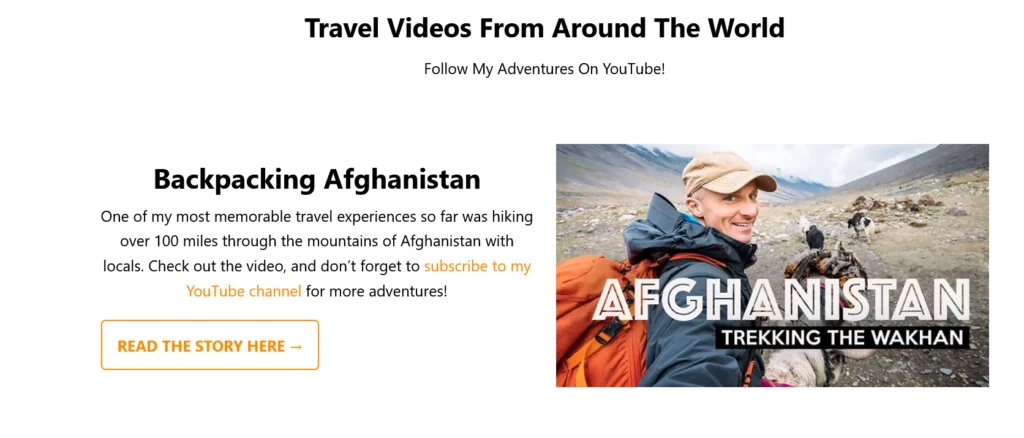
Why it works:
- Social Media: Expert Vagabond, an adventure travel blog, strategically utilizes social media platforms. The blogger, Matthew Karsten, maintains active profiles on Instagram, Facebook, Twitter, and Pinterest. He shares captivating travel photos, blog posts, and engages with his audience, fostering a vibrant community of adventure enthusiasts.
- Email Marketing: Expert Vagabond builds an email list by offering a newsletter subscription. Subscribers receive regular updates, exclusive content, and valuable travel tips. This direct communication channel allows for a more personalized connection with the audience.
- Guest Posting: Matthew Karsten engages in guest posting on other travel blogs to expand his reach. By sharing his expertise and experiences on different platforms, he increases exposure and attracts new audiences interested in adventure travel.
- Collaborate: Collaborating with other travel bloggers, tourism boards, and travel-related businesses is a key strategy. Expert Vagabond’s collaborations not only expand his network but also provide diverse content and perspectives for his audience.
8. Monetize Your Blog

While blogging can be a fulfilling hobby, it can also be a source of income. Explore various monetization strategies to turn your passion into a sustainable endeavor:
Example: The Blonde Salad – Fashion and Luxury Travel
- Affiliate Marketing: This blog founded by Chiara Ferragni, utilizes affiliate marketing to promote fashion and travel-related products. By recommending items and earning a commission on sales through affiliate links, the blog generates revenue aligned with its niche.
- Sponsored Content: The Blonde Salad partners with renowned brands for sponsored posts and collaborations. These partnerships not only provide financial opportunities but also enhance the blog’s credibility and visibility within the fashion and luxury travel industry.
- Sell Your Products: In addition to sponsored content, Chiara Ferragni has created and sells her own line of products, including fashion items and accessories. Selling merchandise related to your niche allows for additional revenue streams and strengthens your brand identity.
- Ad Revenue: The Blonde Salad likely generates ad revenue through partnerships with fashion and travel-related ad networks. Displaying ads on the blog, especially from reputable networks like Google AdSense, contributes to the overall monetization strategy.
- Freelance Writing: Chiara Ferragni, with her influence and writing skills, may offer freelance writing services to other fashion and travel blogs or publications. This diversification of income sources adds to the overall financial stability of The Blonde Salad.
9. Engage with Your Audience

Building a loyal community is crucial for the success of your travel blog. Actively engage with your audience through various channels:
Example: Migrationology – Food and Travel
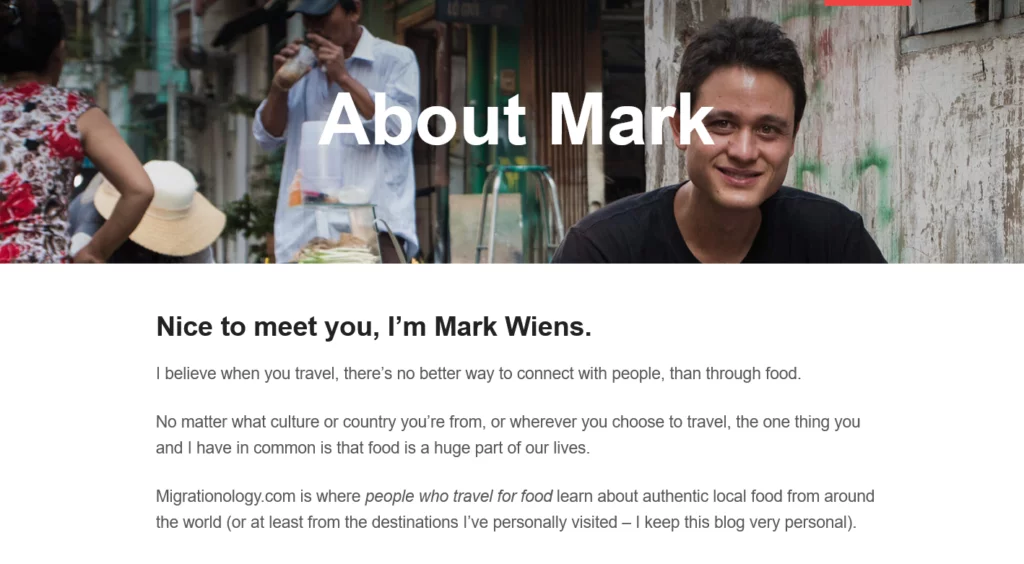
- Interact Through Comments: Migrationology, a blog by Mark Wiens focusing on food and travel, encourages reader interaction through blog comments. Mark responds to questions, shares additional insights, and creates a sense of community within each blog post.
- Social Media Engagement: Mark Wiens uses social media platforms like YouTube and Instagram to engage with his audience. Responding to comments, sharing behind-the-scenes content, and interacting with followers strengthen the connection between the blogger and his community.
- Email Communication: Migrationology likely utilizes email communication to foster a more direct and personalized connection with subscribers. Regular newsletters, updates, and exclusive content contribute to building a loyal readership.
10. Stay Committed and Keep Exploring

Consistency is paramount in the world of travel blogging. Stay committed to your blog and continuously explore the world for new experiences to share with your audience. As you grow and learn, your blog will naturally evolve, providing fresh and exciting content for your readers.
Example: A Beautiful Mess – DIY and Lifestyle
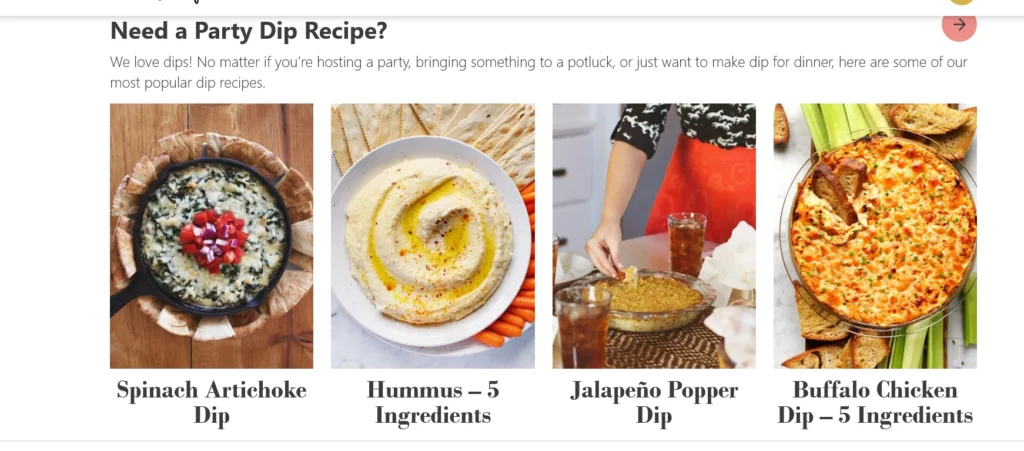
- Consistency in Content Creation: A Beautiful Mess, a blog founded by Elsie Larson and Emma Chapman focusing on DIY and lifestyle, exemplifies consistency in content creation. Regular updates, diverse topics, and engaging visuals contribute to a dynamic and evolving blog.
- Continuous Learning and Evolution: Elsie and Emma have demonstrated a commitment to continuous learning and evolution. The blog has expanded beyond its DIY roots to encompass various lifestyle topics, showcasing the founders’ growth and the blog’s adaptability to changing interests and trends.
Conclusion:
Embarking on the journey of travel blogging is an exhilarating adventure filled with opportunities for self-expression, community building, and even income generation. By following the outlined steps, inspired by real-life examples, you can create a travel blog that not only reflects your passion and expertise but also resonates with a diverse audience.
Remember, the key to a thriving travel blog lies not only in strategic planning and execution but also in staying committed, consistently creating valuable content, and adapting to the evolving landscape of the digital world. Through your commitment to exploration, learning, and engagement, your travel blog can become a powerful platform for sharing experiences, building connections, and leaving a lasting impact on your readers.
FAQs on Travel Blogs:
How do I choose the right niche for my travel blog?
Consider your interests, expertise, and what sets your travel experiences apart. Choose a niche that aligns with your passions and has an audience you can connect with. Realize that a more specific niche, such as adventure travel or luxury travel, can help you stand out.
Can I start a travel blog if I have no technical skills?
Absolutely! Platforms like WordPress offer user-friendly interfaces, and many hosting providers offer one-click installations. Additionally, there are numerous resources and tutorials available online to guide you through the technical aspects of setting up and customizing your blog.
How do I monetize my travel blog?
Monetization avenues include affiliate marketing, sponsored content, selling products (e-books, courses, merchandise), ad revenue, and offering freelance writing services. The key is diversifying your income streams and aligning them with your blog’s niche and audience.
How can I grow my blog’s audience?
Social media promotion, email marketing, guest posting on other blogs, collaborating with fellow bloggers and travel-related entities, and consistently creating high-quality content are effective strategies for expanding your blog’s reach and attracting a larger audience.
How important is engagement with the audience?
Engaging with your audience is crucial for building a loyal readership. Respond to comments on your blog, interact on social media, and communicate via email. Building a community fosters trust, loyalty, and encourages your audience to return for more content.



